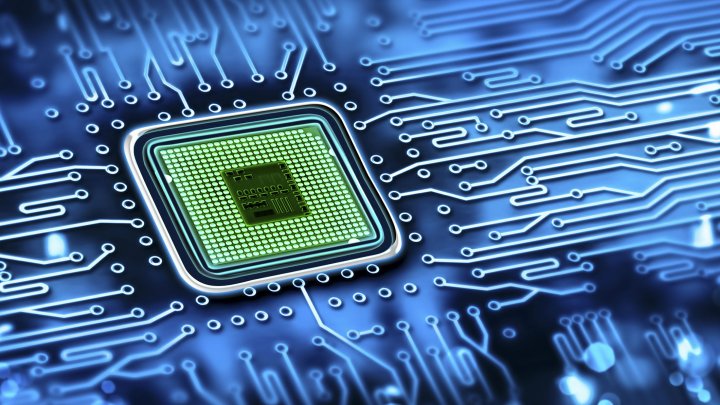VLSI: The future
 Samiddho Chatterjee
Samiddho Chatterjee
VLSI, which stands for "Very Large Scale Integration," is a critical component in the field of electronics. It encompasses the entire process of integrating thousands of transistors onto a single chip, known as an Integrated Circuit (IC). Among the most prevalent VLSI devices is the microprocessor.
HISTORY OF VLSI:
The history of VLSI dates back to the 1970s when complex semiconductor and communication technologies were being developed. During this time, integrated circuits made of MOSFET (MOS integrated circuit) gained popularity and widespread adoption. Before the introduction of this technology, ICs had limited functionality. The MOS integrated circuit marked the starting point for VLSI, enabling around 10,000 transistors to be placed on a single chip. Over time, the number of transistors increased to 100,000, 10,00,000, and now, there are millions of transistors on a single chip. At one point, there was an attempt to change the name and establish various levels of large-scale integration beyond VLSI. Terms such as ultra-large-scale integration (ULSI) were used, but the sheer number of gates and transistors available in common devices has made such distinctions irrelevant. Terms implying higher levels of integration than VLSI are no longer widely used.
THE POSITIVE SIDE OF VLSI:
VLSI technology offers several significant advantages in the field of electronics:
1. Reduced circuit size: VLSI allows for the integration of a large number of transistors and other components onto a single chip, significantly reducing the physical size of circuits. This miniaturization enables the development of smaller and more compact electronic devices.
2. Increased cost-effectiveness: By integrating numerous transistors onto a single chip, VLSI technology helps reduce manufacturing costs. Mass production of integrated circuits results in economies of scale, making electronic devices more affordable for consumers.
3. Improved circuit performance: VLSI enables the creation of high-performance circuits with enhanced operating speeds. The integration of multiple components on a chip minimizes the interconnection lengths, reducing signal propagation delays and improving overall circuit performance.
4. Lower power consumption: Compared to discrete components, VLSI circuits require less power to operate. This power efficiency is achieved through advanced design techniques, optimized transistor configurations, and reduced signal interconnect lengths. As a result, electronic devices utilizing VLSI technology have improved energy efficiency and longer battery life.
5. Higher device reliability: VLSI technology incorporates complex designs and manufacturing processes that enhance the reliability of electronic devices. The integration of components on a single chip reduces the number of interconnections and potential points of failure, leading to more reliable and robust devices.
6. Space efficiency and miniaturization: VLSI facilitates the packing of a large number of transistors and components into a small area, enabling the development of compact and space-efficient electronic devices. This is particularly important in applications where space is limited, such as mobile devices or wearable technology.
Overall, VLSI technology has revolutionized the electronics industry by enabling the production of smaller, cost-effective, and high-performance devices with improved power efficiency and reliability.
NEGATIVE SIDE OF VLSI:
While VLSI technology brings numerous advantages to the field of electronics, it is important to consider some of its potential negative effects:
1. Complexity and Design Challenges: The design and manufacturing of VLSI circuits require sophisticated tools and expertise. The complexity involved in integrating a large number of components on a single chip can lead to design challenges, such as increased design time, higher development costs, and potential errors in circuit functionality.
2. High Initial Investment: The development of VLSI circuits often requires significant initial investment in research, development, and infrastructure. This can pose a barrier to entry for smaller companies or startups, limiting competition and innovation in the industry.
3. Obsolescence and Rapid Technological Advancement: The rapid pace of technological advancements in VLSI can result in the obsolescence of devices and designs within a short period. This can lead to a shorter product lifecycle, increased electronic waste, and a constant need for upgrades or replacements.
4. Intellectual Property Protection: With the increasing complexity and integration levels in VLSI circuits, protecting intellectual property becomes more challenging. Reverse engineering and intellectual property infringement pose risks to companies investing in VLSI technology.
5. Environmental Impact: The manufacturing process of VLSI circuits involves the use of various chemicals, energy-intensive processes, and generates waste. Improper handling of these materials can have adverse environmental impacts, such as pollution and resource depletion.
6. Accessibility and Equity: The advanced nature of VLSI technology may contribute to a digital divide, where access to cutting-edge electronics and technology is limited to those with financial means. This can exacerbate existing social and economic inequalities.
While VLSI technology offers significant benefits, it is essential to address these negative effects through responsible manufacturing practices, design methodologies, and policies that promote sustainability, accessibility, and fair competition in the industry.
VLSI IS THE FUTURE
The combination of VLSI and signal processing methods in wireless mobile communications, particularly for next-generation mobile communication, holds tremendous promise. The industry is actively exploring data science approaches to gain deeper insights into VLSI and leverage them to drive profitability. Simultaneously, the research community is examining the prospects of the VLSI industry and increasingly focusing on integrating VLSI with computer architecture and system architectures, generating renewed interest and enthusiasm.
Undoubtedly, the role of machine learning in VLSI design and artificial intelligence in modern-day technology cannot be ignored. The impact of artificial intelligence in VLSI design is becoming evident, as AI specialists and VLSI engineers collaborate and discover new avenues for innovation. This convergence opens up exciting possibilities for the future of the VLSI industry.
As technology continues to advance rapidly, the future of the VLSI industry looks extremely promising, with new technologies emerging each day. Consequently, numerous academics have directed their efforts towards developing software-hardware co-designs that meet stringent performance criteria. This interdisciplinary approach ensures that the VLSI industry will continue to thrive and flourish in the coming years.
Subscribe to my newsletter
Read articles from Samiddho Chatterjee directly inside your inbox. Subscribe to the newsletter, and don't miss out.
Written by
